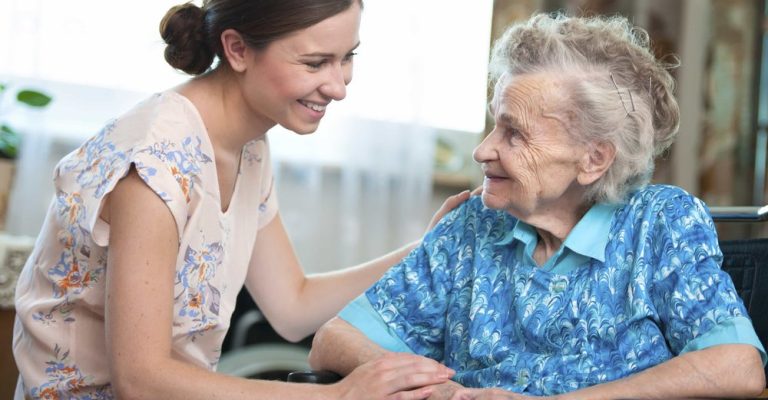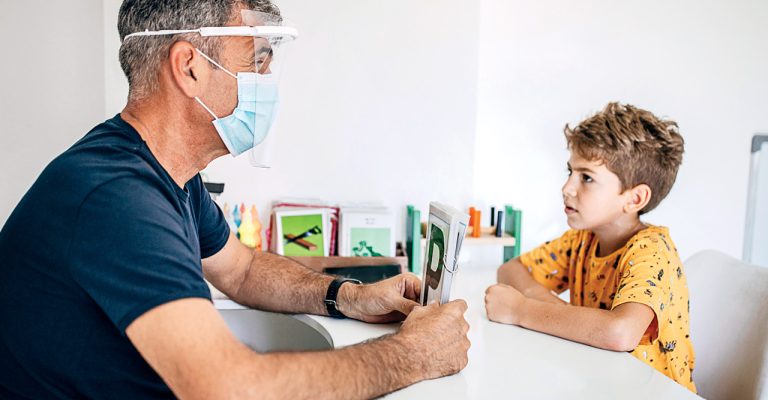
Strokes, also known as cerebrovascular accidents (CVA), may impact and damage one or more brain parts. A person who has had a left-brain stroke may have difficulty communicating. Speech therapy exercises for stroke patients aid in overcoming communication difficulties.
Speech therapy exercises can aid in the recovery of speech after a stroke. You’ll learn some fantastic speech therapy exercises you can do at home. Then, even if you can’t speak, we’ll give you some pointers to get you started.
Speech therapy activities are excellent for treating language impairments such as aphasia. These problems develop when the brain’s language center is injured as a result of an accident such as a stroke.
The language center is located in the brain’s left hemisphere. As a result, aphasia often arises after a left hemisphere stroke or brain damage.
Speech therapy activities promote neuroplasticity, the brain’s capacity to remodel itself, which helps enhance language abilities. Healthy parts of the brain may take over language function through neuroplasticity.
Speech therapy exercises train new brain parts to perform speech and communication functions.
You should ideally work with a Speech Language Pathologist to enhance your language abilities. In the interim, you may do the following speech therapy activities at home.
Here are some home speech therapy exercises to try:

Stick your tongue out for a few seconds, then draw it back in. Hold for 2 seconds before repeating. This helps educate your tongue to move in coordinated patterns, resulting in improved speech.
Open your mouth and move your tongue to the right corner of your mouth for this speech therapy practice. Touch the left corner of your mouth after a few seconds. Hold for 2 seconds before repeating.
Open your mouth and extend your tongue. Then, bring your tongue up to your nose. Hold for a few seconds before extending your tongue toward your chin.
All of these speech therapy exercises should be done in front of a mirror so that you can gain visual feedback.
After mastering the grin:
Slowing down the movement will give you more control.

Now that we’ve accomplished the basic speech therapy exercises let’s move on to more sophisticated tasks.
Choose a consonant you have difficulty pronouncing and couple it with each vowel.
Patients suffering from speech apraxia have no difficulty with the cognitive aspects of language production. Their capacity to move their lips and tongue, however, is hindered.
As a result, reading aloud allows you to practice speaking. Begin by practising a phrase or two for little periods, such as one or two minutes. Then, gradually increase your practice time.
Phonology-related speech therapy activities may assist patients in enhancing their capacity to create speech.
You will estimate the number of syllables in a word for this activity. Request that a caregiver sits with you and speak various words. Guess how many syllables a word has each time they speak it. This practice is therapeutic in part because of the feedback.
Word games are excellent adult speech therapy exercises. Even though you are not making a speech, these games test your language processing abilities.
Try word games like word searches or crossword puzzles to improve your problem-solving and visual processing skills.
When you play most brain games regularly, they will help you enhance your speech.

Patients unable to speak after a stroke have most certainly suffered significant damage to the brain’s language area. Recovery will need more time and effort, but it is often doable.
Most speech therapy activities are inaccessible to mute patients, but they may take a step back and attempt a new speech treatment: singing therapy.
Surprisingly, even if a person cannot speak, they can generally sing their words. This is because speaking is a left-brain function, while singing is a right-brain one.
Singing therapy, a novel technique, assists patients in capitalizing on this potential for rehabilitation.
Many persons who struggle to regain their speaking ability after a brain injury or stroke find remarkable progress with singing therapy.
Doing these workouts alone every day might get tedious. This occurs when you do not get any progress reports or feedback. You may end up performing them incorrectly.
If you or someone you care about has had a stroke and has moderate to severe communication issues, you may choose online speech therapy.
If you have difficulty with your speech and cognitive abilities, you should consider working with a speech-language pathologist (SLP).
An SLP is qualified to assist you in regaining your speech after a neurological injury, and they deal with all of the aspects of speech recovery that we discussed before.
Most individuals work with an SLP for as long as their insurance allows, then switch to speech apps when their insurance runs out.

Speech functions that your SLP will evaluate include speaking, listening, writing, reading, and remembering, among others.
Because oral motor skills are just a minor portion of the total speech, working with a professional and using speech therapy apps might be beneficial.
Your SLP will examine your problem areas and create a treatment program tailored to your specific requirements.
Speech and communication do not begin and end with the exchange of words. It entails knowing what to say, how to say it, when to breathe, and how to make whole sentences.
Speech therapy activities may be quite beneficial to stroke sufferers. These may assist children in learning how to create sounds, form words, and appropriately breathe during speaking.
Speech difficulties may be quite irritating, particularly when they do not appear to improve with time. Working with a professional speech pathologist is the greatest approach to achieving visible, long-term speech rehabilitation.